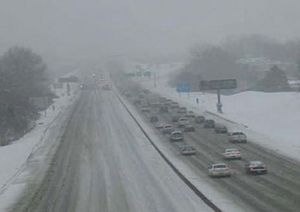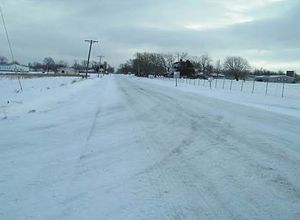Category:144 Practical Operations: Difference between revisions
m updated link |
No edit summary |
||
| (11 intermediate revisions by 2 users not shown) | |||
| Line 10: | Line 10: | ||
:* Honor commitments in the [[121.3 The Statewide Transportation Improvement Program (STIP)|STIP]] | :* Honor commitments in the [[121.3 The Statewide Transportation Improvement Program (STIP)|STIP]] | ||
:* Keep [ | :* Keep [[media:144 Major Highway System 2022.pdf|major roads]] in good condition | ||
:* Improve condition of minor roads | :* Improve condition of minor roads | ||
:* Hold our own on bridges so their condition does not get worse | :* Hold our own on bridges so their condition does not get worse | ||
| Line 46: | Line 46: | ||
==144.1 [[:Category:133 Snow and Ice Control|Winter Operations]] Changes== | ==144.1 [[:Category:133 Snow and Ice Control|Winter Operations]] Changes== | ||
“[[133.4 Snow and Ice Control Operations#Continuous Operations Route Paved Shoulders:|Continuous Operations]]” definition has been revised by reprioritizing the roads for regional significance. A route needs to be a [ | “[[133.4 Snow and Ice Control Operations#Continuous Operations Route Paved Shoulders:|Continuous Operations]]” definition has been revised by reprioritizing the roads for regional significance. A route needs to be a [[media:144 Major Highway System 2022.pdf|major route]] or have an AADT of at least 2500 to receive treatment as a “Continuous Operations Route”, as shown in the map to the right. Continuous operations will be performed until roads are mostly clear. Crews will return next working day and continue fight where progress can be made. Emergency crews are to be ready to handle overnight refreeze/slick spots. | ||
"Non-Continuous Operations Routes” (typically, low volume minor routes), will be plowed open to two-way traffic. Hills, curves and intersections will be treated as needed. | "Non-Continuous Operations Routes” (typically, low volume minor routes), will be plowed open to two-way traffic. Hills, curves and intersections will be treated as needed. | ||
There are [ | There are [https://epg.modot.org/index.php/133.5_Operator%E2%80%99s_Guide_for_Anti-Icing#133.5.1_Operations_Guide_for_Maintenance_Field_Personnel five types of winter events]: | ||
:* '''Type 5''' – Frost, flurries, freezing fog, blowing snow and refreeze | :* '''Type 5''' – Frost, flurries, freezing fog, blowing snow and refreeze | ||
| Line 96: | Line 96: | ||
|[[image:144.2 signing 1.jpg|200px]]||[[image:144.2 signing 2.jpg|111px]] | |[[image:144.2 signing 1.jpg|200px]]||[[image:144.2 signing 2.jpg|111px]] | ||
|} | |} | ||
MoDOT will | MoDOT will minimize unnecessary sign replacement by only replacing signs that have reached the end of their service life using nighttime sign inspections to determine the failure point. MoDOT will use the minimum size signpost necessary to support the sign and will reuse structural posts and bases when possible. Also, MoDOT will design new signs to fit existing bases and posts, where possible. | ||
Larger aerial trucks used for sign installations will be made available for state wide use. The [http://wasprod/sms/ Sign Management System] will be used to manage sign inventories and the ordering processes. | |||
==144.3 [[:Category:620 Pavement Marking|Striping Operations]] Changes== | ==144.3 [[:Category:620 Pavement Marking|Striping Operations]] Changes== | ||
| Line 106: | Line 106: | ||
|} | |} | ||
Every [ | Every [[media:144 Major Highway System 2022.pdf|major road]] and every “regionally significant” route will be striped annually unless retroreflectivity performance of the lines meet or exceed minimum requirements. One-half of the remaining minor roads with AADT ≥ 400 will be striped each year. One-third of the minor roads with AADT < 400 will also be striped each year. Strategies, such as night time striping or multiple crews per striper, will be used to complete the program with the available striper fleet that will be downsized. | ||
==144.4 [[:Category:822 Roadside Vegetation Management|Mowing Operations]] Changes== | ==144.4 [[:Category:822 Roadside Vegetation Management|Mowing Operations]] Changes== | ||
| Line 122: | Line 115: | ||
|'''Safety Video''' | |'''Safety Video''' | ||
|- | |- | ||
|[ | |[https://epg.modot.org/documents/132_Mowing_Safety.wmv Mowing Safety] | ||
|} | |} | ||
* All [ | * All [[media:144 Major Highway System 2022.pdf|major routes]] will be mowed by MoDOT crews prior to Memorial Day and mid-July. | ||
{| style="margin: 1em auto 1em auto" align="right" | |||
|- | |||
|[[image:144.4.jpg|right|200px]] | |||
|} | |||
* Crews will mow the first 15 ft. from the edge of the pavement and medians that are narrower than 60 ft. | * Crews will mow the first 15 ft. from the edge of the pavement and medians that are narrower than 60 ft. | ||
* The 15 ft. wide mowing path will allow good sight distance for drivers, which is important for safety. | * The 15 ft. wide mowing path will allow good sight distance for drivers, which is important for safety. | ||
| Line 135: | Line 130: | ||
* MoDOT will also use plant growth regulators to keep the overall height of grass down and address weeds on minor roads and around safety devices. | * MoDOT will also use plant growth regulators to keep the overall height of grass down and address weeds on minor roads and around safety devices. | ||
[[image:144.4 example.jpg|right|280px|thumb|<center>'''Correctly mowed 30 ft. wide on a major road.'''</center>]] | |||
* All major roads will have a final fall mowing up to 30 ft. wide. | * All major roads will have a final fall mowing up to 30 ft. wide. | ||
| Line 145: | Line 140: | ||
See EPG 144.5 for pavement maintenance guidance. | See EPG 144.5 for pavement maintenance guidance. | ||
[[Category:100_GENERAL]] | |||
Latest revision as of 14:28, 12 December 2024
| Handouts |
| Winter Operations |
| Mowing |
Because of dramatically constrained revenues, MoDOT will do more quality work with fewer resources. MoDOT will:
- Honor commitments in the STIP
- Keep major roads in good condition
- Improve condition of minor roads
- Hold our own on bridges so their condition does not get worse
- Maintain high customer satisfaction
 |
| Safe Lifting |
| Developing MoDOT's Safety Culture |
| Snow and Ice Removal Process |
The operations departments will make internal operations more efficient. MoDOT has a new direction in five major areas of work including snow removal, striping, signing, mowing and pavement maintenance. All savings from these operational changes will be used to preserve MoDOT’s high customer satisfaction by keeping our major roads in good condition by producing more quality work on pavements, improving minor roads and maintaining bridges so their conditions don’t get worse.

| Northwest District | Northeast District | |
| Kansas City District | Central District | |
| Saint Louis District | Southwest District | |
| Southeast District | ||
144.1 Winter Operations Changes
“Continuous Operations” definition has been revised by reprioritizing the roads for regional significance. A route needs to be a major route or have an AADT of at least 2500 to receive treatment as a “Continuous Operations Route”, as shown in the map to the right. Continuous operations will be performed until roads are mostly clear. Crews will return next working day and continue fight where progress can be made. Emergency crews are to be ready to handle overnight refreeze/slick spots.
"Non-Continuous Operations Routes” (typically, low volume minor routes), will be plowed open to two-way traffic. Hills, curves and intersections will be treated as needed.
There are five types of winter events:
- Type 5 – Frost, flurries, freezing fog, blowing snow and refreeze
- Type 4 – Dusting to 1 in. of snow, sleet, or other frozen precipitation
- Type 3 – 1 in. to 6 in. of snow/frozen precipitation in 24 hours OR a trace to ½ in. of ice
- Type 2 – 6 to 12 in. of snow in 24 hours or ½ to ¾ in. ice
- Type 1 – More than 12 in. of snow in 24 hours or more than ¾ in. ice
The truck fleet will be reduced over three years and the use of salt will also be reduced. MoDOT will continue to plow snow and treat roads and focus efforts on making roads safe and passable. Practical Operations will efficiently attack each storm by providing statewide consistency.
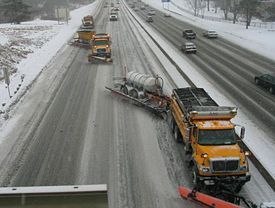
Winter Operations Key Focus
- Plow snow and treat roads to make the roads safe and passable
- Prioritize roads by type and regional significance
- Have an efficient plan of attack for each storm type
- Be consistent across the state
Major Roads Plowed Mostly Clear
- Crews will provide continuous operations to major roads and roads of regional significance
until conditions are mostly clear.
- Overnight, emergency crews will monitor for slick spots.
- The following day in normal business hours, crews will work on road conditions on these roads and lower priority roads.
Low Volume Roads (<2,500 daily traffic)
- Loose snow will be plowed to two-way passable traffic.
- Hills, curves and intersections will be treated
144.2 Signing Operations Changes
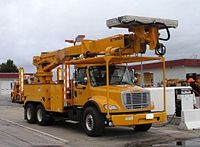 |
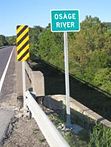
|
MoDOT will minimize unnecessary sign replacement by only replacing signs that have reached the end of their service life using nighttime sign inspections to determine the failure point. MoDOT will use the minimum size signpost necessary to support the sign and will reuse structural posts and bases when possible. Also, MoDOT will design new signs to fit existing bases and posts, where possible.
Larger aerial trucks used for sign installations will be made available for state wide use. The Sign Management System will be used to manage sign inventories and the ordering processes.
144.3 Striping Operations Changes
 |
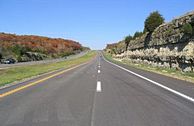
|
Every major road and every “regionally significant” route will be striped annually unless retroreflectivity performance of the lines meet or exceed minimum requirements. One-half of the remaining minor roads with AADT ≥ 400 will be striped each year. One-third of the minor roads with AADT < 400 will also be striped each year. Strategies, such as night time striping or multiple crews per striper, will be used to complete the program with the available striper fleet that will be downsized.
144.4 Mowing Operations Changes
 |
| Safety Video |
| Mowing Safety |
- All major routes will be mowed by MoDOT crews prior to Memorial Day and mid-July.
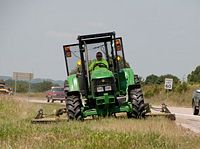 |
- Crews will mow the first 15 ft. from the edge of the pavement and medians that are narrower than 60 ft.
- The 15 ft. wide mowing path will allow good sight distance for drivers, which is important for safety.
- Minor roads will be mowed during the growing season as needed to keep the nearest strip to the edge of pavement at 12 inches in urban areas and 18 inches in rural areas.
- MoDOT will also use plant growth regulators to keep the overall height of grass down and address weeds on minor roads and around safety devices.
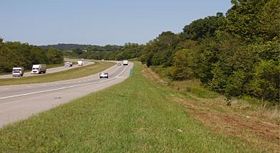
- All major roads will have a final fall mowing up to 30 ft. wide.
- Minor roads will have a final fall mowing up to 30 ft. wide in odd years and up to 15 ft. wide in even years.
- MoDOT is also reducing contract mowing except for areas where specialty equipment is required due to steep slopes or other unique circumstances.
Pavement Maintenance
See EPG 144.5 for pavement maintenance guidance.
Articles in "144 Practical Operations"
This category contains only the following page.
